Change Language :
Control cables for energy chains
50% off surplus cable stock
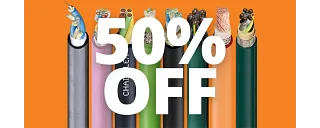
In our online shop, discover surplus cable lengths at a 50% discounted rate!
These set lengths from the standard range maintain the same quality as the rest of our chainflex® cables and are backed by a 4-year guarantee.
Simply visit your desired cable within our shop and check for surplus lengths available at half price.
chainflex® control cable options
chainflex® control cable CF130.UL
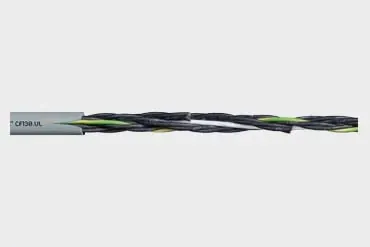
- YY cable
- Flame retardant
- For medium duty applications
chainflex® control cable CF77.UL.D
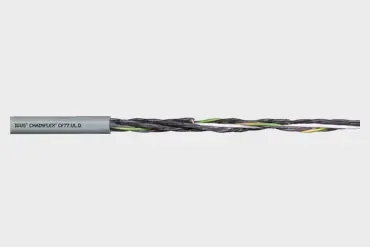
- Hydrolysis and microbe-resistant
- Flame retardant
- UV-resistant
chainflex® control cable CF9
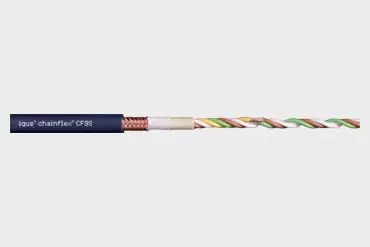
- Low-temperature-flexible
- Hydrolysis and microbe-resistant
- For heaviest duty applications
chainflex® control cable CF140.UL
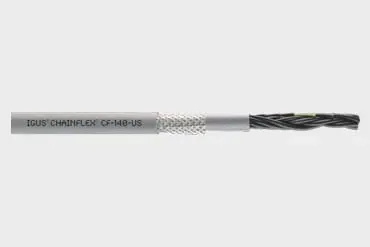
- CY cable
- Flame retardant
- For medium duty applications
chainflex® control cable CF78.UL
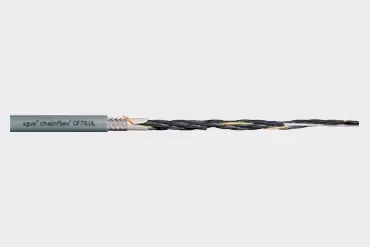
- Outer jacket: PUR
- For heavy duty applications
- Oil-resistant according to DIN EN 50363-10-2
Overview of chainflex® cables
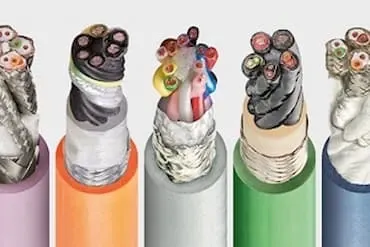
- If you would like to see a full overview of all chainflex® cables available you can return to the overview page here
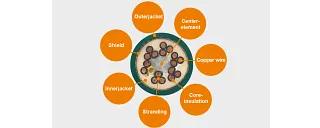
Seven reasons for our chainflex cable
In the course of cable developments over the past few decades, seven principles have evolved that ensure a high-quality, long-lasting cable in an e-chain.
At igus, we call these findings the "seven reasons".
We rely on cores wound in bundles
Our control cables from 12 cores upwards have a special mechanical design to achieve a long service life in motion. We use so-called cores wound in bundles with a short pitch length.
But what does cores wound in bundles mean in concrete terms?
With cores wound in bundles, the cores are stranded in bundles depending on the number of cores and these bundles are stranded again. However, this very complex method is necessary in order to absorb the push/pull forces of the movement. These forces arise when the cable is in the radius. The core is compressed in the inner radius and elongated in the outer radius. We have developed the cores wound in bundles so that these forces do not put too much strain on a core, as this allows a core to constantly change its position within the cable. This equalises the forces. This is particularly important to prevent the so-called corkscrew effect, which often occurs over long distances.
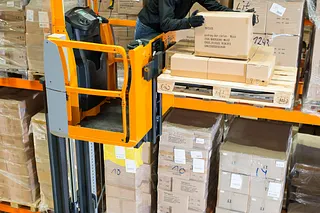
Cable in the forklift - a special challenge
For us, a very exotic application is the winding and unwinding of cables via plastic rollers on the forklift in the mast. This cable is pulled so that it does not jump off the reel when the vehicle is travelling. In addition, the deflection via these rollers puts extreme strain on the stranding. Years ago, our customer found out that this can lead to problems, and was very conscientious about testing it himself. We were allowed to take part in the customer's tests with our product and were able to convince them with the special cores wound in bundles, as the rope construction cancels out the forces on the core. Many years later, corkscrew in the cable and core breaks in this application have long been forgotten. If you also have challenges that your cable is not up to today, this could be the first step towards finding a solution together with us.
Frequently asked questions about control cables
An SY cable is used for applications where mechanical protection is required.
igus® does not produce SY cables, why? SY stands for steel wire braided, and the galvanised steel wire braid are not designed to withstand repeated bending or flexing as the steel braid can fracture or unravel over time.
Alternatively, we offer our e-chains® as mechanical protection. igus® also provide CY and YY cables.
A CY cable, alongside YY and SY cables are all types of flexible control cables used in industrial environments for transmitting signal and power to machines.
A CY cable is a screened PVC control cable 300/500V, suitable for when EMI protection is high. igus® provide multiple versions of CY cables depending on the application requirements.
YY cables are unscreened PVC control cables 300/500V which are designed for use when EMI protection is not required, as there are no sensitive signals. igus® offer two grades of PVC cables, either non oil resistant or an oil resistant version.
Contact us
Contact details

Opening hours
Office hours
Monday to Friday from 8 am - 8 pm.
Live chat:
24h
